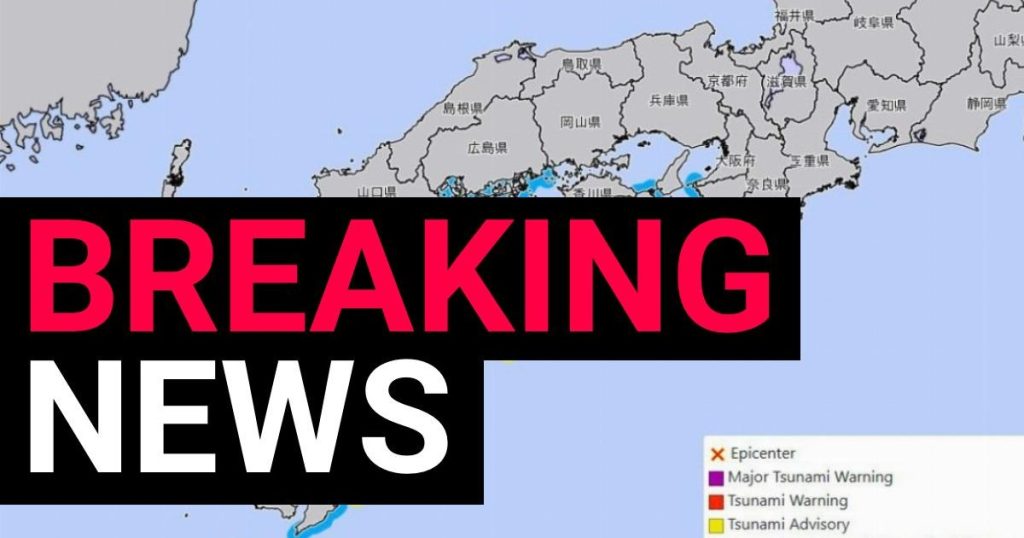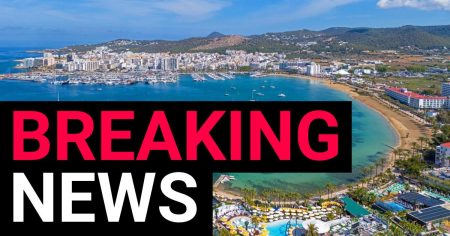A Coastal Quake Shakes Japan, Triggering Tsunami Advisory
A magnitude 6.9 earthquake struck off the coast of Miyazaki prefecture, on the southwestern Japanese island of Kyushu, late in the evening. The temblor immediately triggered a tsunami advisory for Miyazaki and the neighboring Kochi prefecture, prompting urgent evacuations in coastal areas. The initial warning issued by the Prime Minister’s office was subsequently downgraded to an advisory, though a small tsunami wave, measuring 20 centimeters, was later observed reaching Miyazaki city. While concerns arose regarding the two closest nuclear power plants in Sendai and Ikata, no abnormalities were reported by Shikoku Electric Power.
The earthquake’s epicenter was located offshore at a depth of approximately 19 miles. While the full extent of the damage remained unclear in the immediate aftermath, authorities were closely monitoring the situation. Japan’s vulnerability to seismic activity stems from its location along the "Ring of Fire," a geologically active zone characterized by volcanoes and fault lines encircling the Pacific Basin.
Japan’s Precarious Position on the Ring of Fire
Japan’s geographical location along the Ring of Fire makes it particularly susceptible to earthquakes. The Ring of Fire is a horseshoe-shaped zone stretching approximately 40,000 kilometers (25,000 miles) around the Pacific Ocean. It is associated with a nearly continuous series of oceanic trenches, volcanic arcs, and volcanic belts and/or plate movements. Roughly 90% of the world’s earthquakes and approximately 80% of the world’s largest earthquakes occur along the Ring of Fire. This geological activity is a consequence of plate tectonics, with the Pacific Plate interacting with several surrounding tectonic plates. The movement and collision of these plates generate immense pressure and energy, leading to earthquakes and volcanic eruptions.
The constant threat of seismic activity has shaped Japan’s infrastructure and disaster preparedness strategies. Stringent building codes and earthquake-resistant construction techniques are employed to minimize damage. Early warning systems are in place to provide timely alerts to the public, and regular earthquake drills are conducted to ensure preparedness. Despite these measures, the power of nature remains a formidable challenge, and earthquakes continue to pose a significant risk to the country.
Tsunami Formation and the Coastal Threat
Tsunamis, often triggered by undersea earthquakes, represent a significant coastal hazard. When a submarine earthquake occurs, the seabed can either uplift or subside, displacing a large volume of water. This displacement generates a series of waves that propagate outward from the epicenter. While these waves may be barely perceptible in the open ocean, as they approach shallower coastal waters, they slow down and increase in height, often forming devastating walls of water that can inundate coastal communities.
The speed of a tsunami wave depends on the depth of the water. In deep ocean waters, tsunami waves can travel at speeds comparable to a jet airliner, often exceeding 500 miles per hour (800 kilometers per hour). As the waves approach the shore and enter shallower waters, their speed decreases, but their amplitude, or wave height, increases dramatically. This phenomenon can result in tsunami waves reaching heights of several meters or even tens of meters upon impacting the coast.
Nuclear Power Plants and Earthquake Safety in Japan
The proximity of the earthquake to the Sendai and Ikata nuclear power plants raised immediate concerns about potential damage and the risk of a nuclear accident. Following the Fukushima Daiichi nuclear disaster in 2011, triggered by a massive earthquake and tsunami, Japan implemented stringent safety upgrades at its nuclear facilities. These upgrades included enhanced seawalls, backup power systems, and improved emergency response procedures.
The Fukushima disaster underscored the vulnerability of nuclear power plants to natural disasters, particularly in seismically active regions. The earthquake and subsequent tsunami overwhelmed the plant’s defenses, leading to a meltdown of three reactors and the release of radioactive materials into the environment. The incident prompted a reassessment of nuclear safety protocols worldwide and a heightened focus on disaster preparedness in Japan.
Evacuation Procedures and Community Response
The prompt evacuation orders issued for coastal communities in Miyazaki and Kochi prefectures underscore the importance of preparedness and rapid response in the face of tsunami threats. Evacuation plans typically involve designated evacuation routes and assembly points, often located on higher ground or in designated safe zones. Public awareness campaigns and regular drills help ensure that residents understand evacuation procedures and can respond effectively in emergencies.
Effective communication is crucial during a natural disaster. Authorities utilize various channels, including television, radio, and mobile alerts, to disseminate information about the threat, evacuation orders, and safety instructions. Community-based disaster preparedness programs play a vital role in educating the public and fostering a culture of preparedness. Cooperation between government agencies, local communities, and individuals is essential for minimizing the impact of natural disasters and ensuring public safety.
Long-Term Recovery and Resilience Building
While the immediate focus in the aftermath of an earthquake and tsunami is on search and rescue, medical assistance, and securing essential supplies, the long-term recovery process can span years. Rebuilding infrastructure, restoring essential services, and providing psychological support to affected communities are crucial components of the recovery effort. The economic impact of natural disasters can be significant, requiring substantial investments in reconstruction and economic revitalization.
Building resilience to natural disasters is a continuous process. Strengthening building codes, enhancing early warning systems, improving evacuation procedures, and investing in disaster-resistant infrastructure are essential steps towards mitigating future risks. International cooperation and knowledge sharing play a vital role in advancing disaster preparedness strategies and building resilient communities. Learning from past events, such as the 2011 Tohoku earthquake and tsunami, is paramount in improving disaster response and recovery efforts worldwide.











